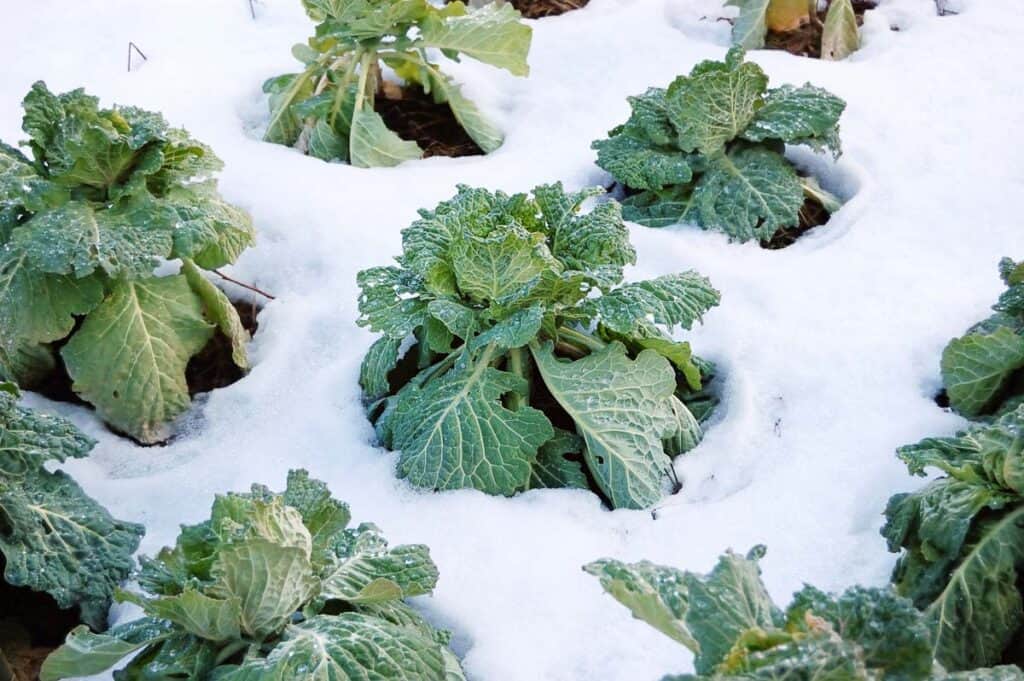Even in the scarcity of winter, it is possible to embrace seasonal eating and enjoy locally grown winter fruits and vegetables during the coldest part of the year. Discover the bountiful array of locally grown produce and unlock the secrets to creating delicious and nourishing meals with the best of the winter season.

Finding abundance in scarcity
In a world where year-round produce availability has become the norm, embracing seasonal eating is a return to the rhythm of nature. It involves savoring locally grown, in-season foods at their peak and preserving them when abundant. Seasonal eating celebrates the ebb and flow of nature’s bounty, recognizing that each season brings unique flavors and culinary opportunities.
By choosing to eat with the seasons, you experience nature’s freshest, most flavorful offerings. In-season fruits and vegetables are often harvested at their peak ripeness, ensuring optimal freshness and flavor, which provides more vibrantly delicious meals on your plate. You are also more likely to support local farmers and sustainable food practices by reducing the environmental impact of long-haul transportation practices.
While wintertime is often perceived as a time of scarcity for fresh produce, some fruits and vegetables peak during this season and others store well through the winter. For additional variety, winter is a great time to use any surplus produce that was canned or frozen at its peak throughout the year.
Winter fruits
During January, February and March, you should see an increase in the availability of citrus fruits as they come into season. In addition to naval oranges, eureka lemons and Persian limes, all mass-produced varieties widely available year-round at supermarkets across the country, you will start to see lesser-known varieties appear. Pink cara cara oranges will pop up next to blood oranges, which get their name from the deep red color of their flesh, along with additional varieties of grapefruits, pomellos, kumquats and uglis.
Additionally, you will see an increase in pome fruits like apples and pears. While these are technically fall fruits, some varieties benefit from being held in cold storage to allow the starches to convert to sugar, resulting in sweeter fruit. Depending on the weather, you may also find pomegranates and persimmons still in season during the first months of winter.

Winter vegetables
Many more vegetables thrive in cooler temperatures than fruits, bringing a much more diverse array of flavors and textures to your winter table. Root vegetables, winter squash and cruciferous vegetables make up the bulk of winter produce and inspire soups, casseroles, roasts and other warm, comforting foods.
Root vegetables, such as parsnips, carrots, beets and celery root, can be grown year-round for multiple harvests, but they taste sweeter when harvested after a frost or two. The same phenomenon that sweetens apples in cold storage occurs when root vegetables are in the ground during a frost, prompting their starches to turn into sugar.
As the name implies, winter squash is best in wintertime. There are many varieties, such as delicata, butternut, acorn and spaghetti squash. While they don’t benefit from a frost, most winter squash can be cured, giving it a shelf-life of up to 6 months, making it a great choice throughout winter.
Cruciferous vegetables like Brussels sprouts, cabbage, broccoli and kale tend to be robust, cold-hardy crops that will continue to produce in cold, but not deep freezing, temperatures. Like root vegetables, they taste best in the winter because they, too, benefit from the cold temperatures of a frost.
Incorporating winter produce into meals
Incorporating winter fruits and vegetables into meals offers a delightful opportunity to infuse dishes with seasonal flavors and textures. While winter vegetables feature some of the most earthy, nutty flavors of the year, they are countered by the refreshing brightness of winter fruit, resulting in a balance inspired by nature.
Refreshing winter fruits
Incorporating winter fruits like citrus and pomegranates into salads, desserts and savory dishes brings a burst of brightness and complexity, adding a refreshing contrast to the heartier components of winter meals. Try adding a bit of lemon zest to roasted chicken with winter vegetables or serving a light and refreshing key lime pie for dessert instead of something heavier.
“I take advantage of using citrus, pears, pomegranates, persimmons and cranberries as much as possible. All of these fruits are perfect for salads and adding to baked goods. And many of them are tasty for simply snacking on.”
— Jere’ Cassidy, One Hot Oven

Hearty root vegetables
The hearty nature of root vegetables makes them perfect for comforting stews, hearty soups and roasted medleys. Roasting root vegetables like carrots, parsnips and turnips brings out their natural sweetness, while adding them to soups and stews adds depth and heartiness. Their earthy flavors complement the cozy ambiance of winter meals, like shepherd’s pie, adding a satisfying touch to the dining experience.
“There is something so comforting about root vegetables! We try to use up as many as we can throughout the winter by roasting them in big batches with a little avocado oil and salt and then popping them into pasta, stir fry and even soups. It gives them such a delicious flavor.”
— Shelby, Fit as a Mama Bear
Winter squash
Winter squash varieties, such as butternut and acorn squash, lend themselves to many culinary possibilities. From creamy soups to savory casseroles, transforming these versatile vegetables into delectable dishes, like butternut squash ravioli, embodies the warmth and comfort of the season. Their rich, nutty flavors and velvety textures create a luxurious dining experience, while their vibrant colors add visual appeal to the table.
“I really like using spaghetti squash because it’s so versatile. I can roast the whole squash and have it as a side dish or as a base for my favorite pasta sauce. Sometimes, I fry it in a pan to make spaghetti squash hash browns.”
— Sharon Rhodes, The Honour System
Cruciferous vegetables
Cruciferous vegetables, including broccoli, cauliflower, Brussels sprouts and kale, are known for their hearty textures and robust flavors. You can enjoy these versatile vegetables in various dishes, from simple sautés to complex, multi-layered culinary creations.
“One of my favorite ways to use leafy greens in the winter is to stir a handful of the leaves into soup! Spinach and kale — be sure to remove the bitter stems and just use the leaves — are my favorite. It doesn’t have to be homemade soup, either – this is also a great way to add some produce into canned soup.”
— Anne Mauney, MPH, RD, fANNEtastic food
Seasonal eating in winter
Embracing seasonal eating with winter fruits and vegetables offers a flavorful journey through the season’s bountiful offerings. From hearty root vegetables to vibrant cruciferous greens, the winter harvest provides a rich tapestry of flavors and textures that inspire culinary creativity and nourish the soul. By savoring the best of winter’s produce, you not only partake in the natural abundance of the season but also connect with the land and the community, fostering a deeper appreciation for the ever-changing delights each season brings.
Renee N Gardner is the creative mastermind behind Renee Nicole’s Kitchen, a recipe blog based on seasonal ingredients, dedicated to helping home cooks build their kitchen confidence to become home chefs. When Renee isn’t writing, developing recipes or photographing food, you’ll find her in the garden, traveling or enjoying the outdoors with her husband, son and two dogs.